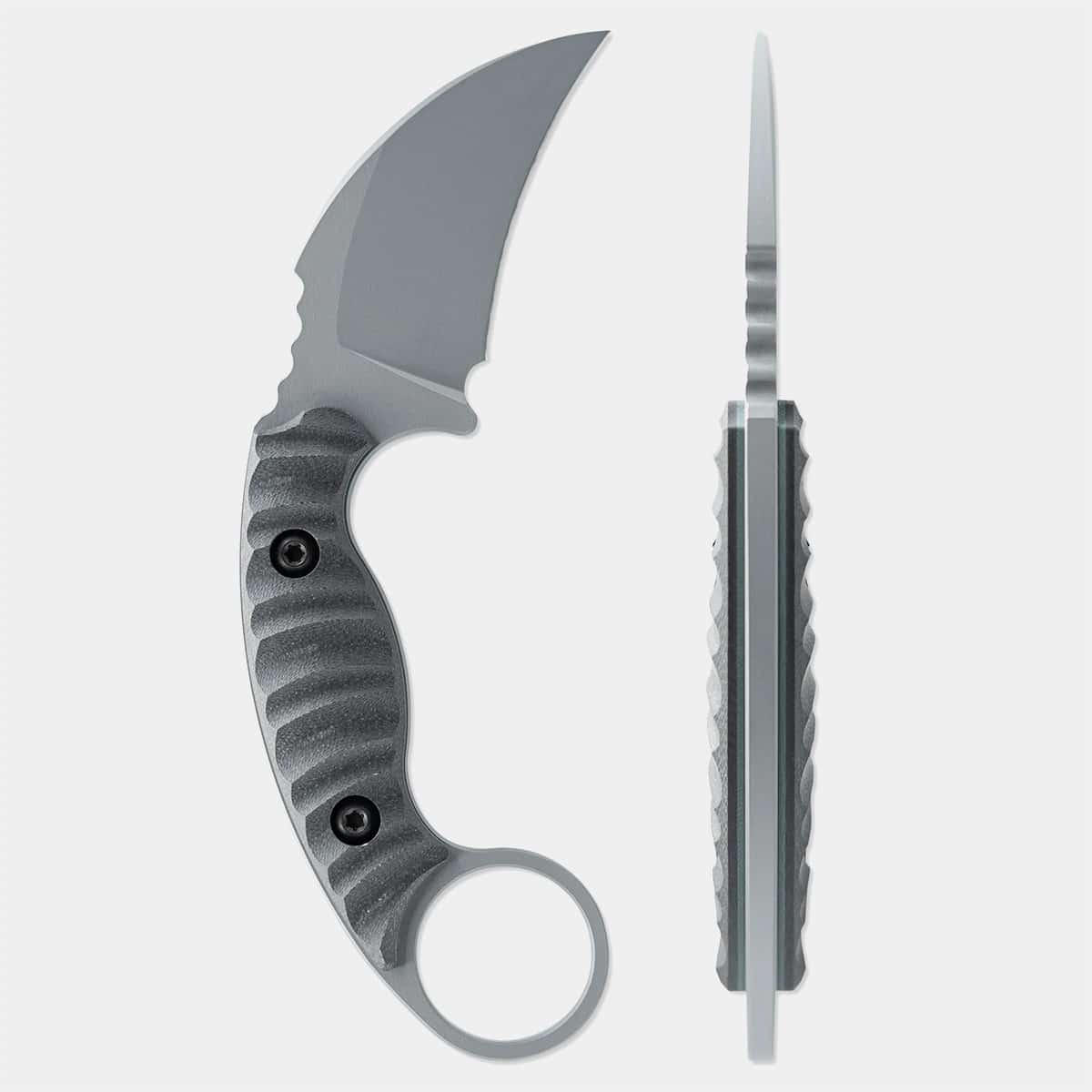Toor Knives Karsumba R Review

In today’s article, Eugene Nielsen reviews the Toor Knives Karsumba R — a karambit-style knife designed for martial use. Curved blades have captured the imagination for hundreds of years, and the Karsumba R is a looker. Nielsen sets out to see if its performance matches its appearance. The company provided the knife for this review.
Continuing its focus on purpose-built blades, Toor Knives has come out with the Karsumba R, a new take on the iconic karambit platform. Part of the SOF Series, it blends ancient martial inspiration with modern tactical design. It’s offered in the company’s signature SOCOM Black and Phantom Grey finishes. I got my hands on the Phantom Grey model.
Founded in 2014 by Marine Corps combat veteran Connor Toor, Toor Knives traces its roots back to humble beginnings in a backyard forge. What began as experimentation with duty-ready blade concepts has grown into a highly respected operation, hand-crafting mission-grade tools in their cutting-edge San Diego facility.
A Historical Look
Originating in the 11th century in what is now Indonesia, the karambit (or kerambit) began as an agricultural tool. Over time, its distinctive arc-shaped edge was refined across Southeast Asia, particularly by the Minangkabau people of West Sumatra, who molded it into a formidable weapon. Its design, said to be inspired by a tiger’s claw, became integral to close-quarters combat.
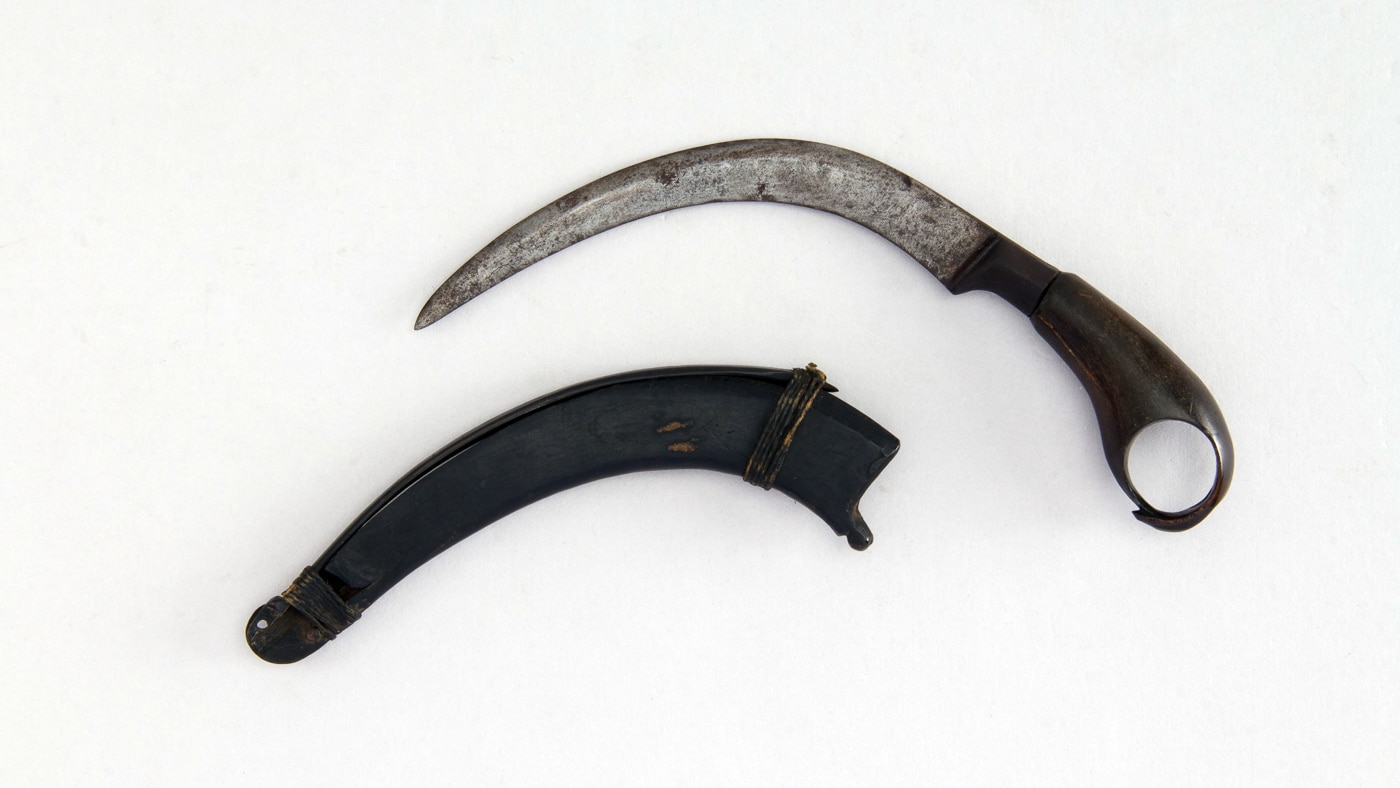
Inextricably linked to the martial art of Pencak Silat, the karambit remains one of the most recognized blades in Southeast Asia. Silat itself dates back to the 4th century AD in the era of the Kutai Kingdom and draws from indigenous traditions, spiritual philosophy, and external influences. It’s now celebrated globally and recognized by UNESCO as a key part of Indonesia’s cultural heritage.
Not all karambits have a retention ring, but most traditional and modern designs do, including the Karsumba R. The ring, often called a safety ring, is one of the karambit’s most iconic features. It allows for better grip security, especially in reverse grip, and enables quick transitions between tasks or grips without dropping the knife. The presence of a retention ring enhances retention and grip stability, making it difficult for an opponent to disarm the user even during dynamic exchanges.
Some modern or minimalist karambit designs may omit the ring for stylistic reasons or to reduce bulk. These are less common and often tailored for specific uses where the ring might get in the way.
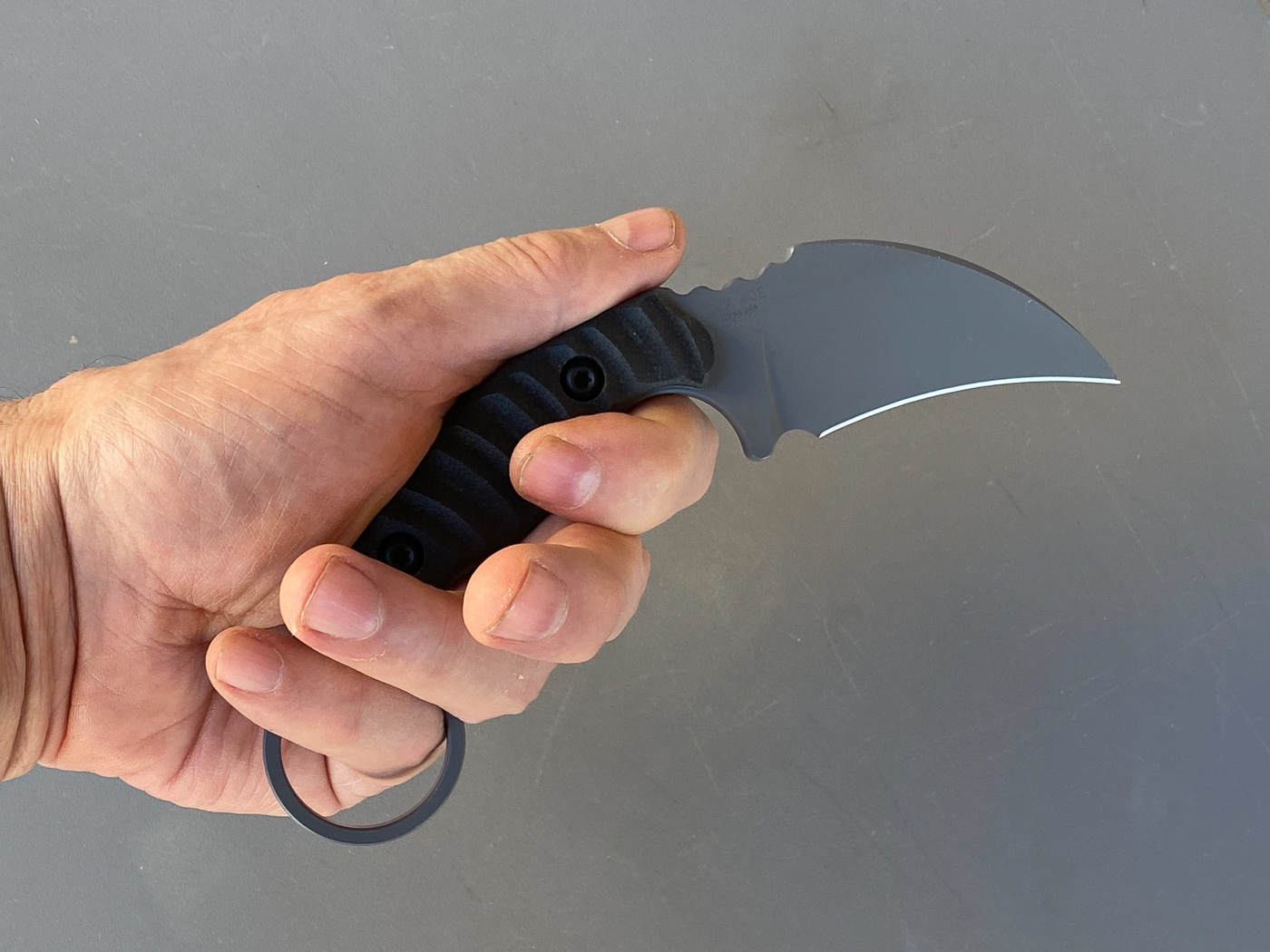
The curved hook-like blade of the karambit offers a distinct set of advantages that make it particularly effective in self-defense and martial arts contexts. Its design, inspired by the claw of a tiger, facilitates powerful slashing and hooking motions. This curvature allows the user to deliver deep, controlled cuts with minimal effort, especially in close-quarters scenarios where movement is restricted. When wielded in a reverse grip, common in styles like Pencak Silat and Filipino Kali. the karambit’s natural arc enhances control, speed, and the ability to target limbs or vital areas effectively. Karambits don’t rely on blade length for effectiveness.
However, the very features that make the karambit so specialized also limit its versatility. The inward curve hampers straight thrusting motions. Additionally, the karambit demands a steeper learning curve. Its unconventional ergonomics and movement patterns require dedicated training for maximum effectiveness. Sharpening the concave edge can also prove challenging and often requires specialized techniques or tools to maintain the correct geometry.
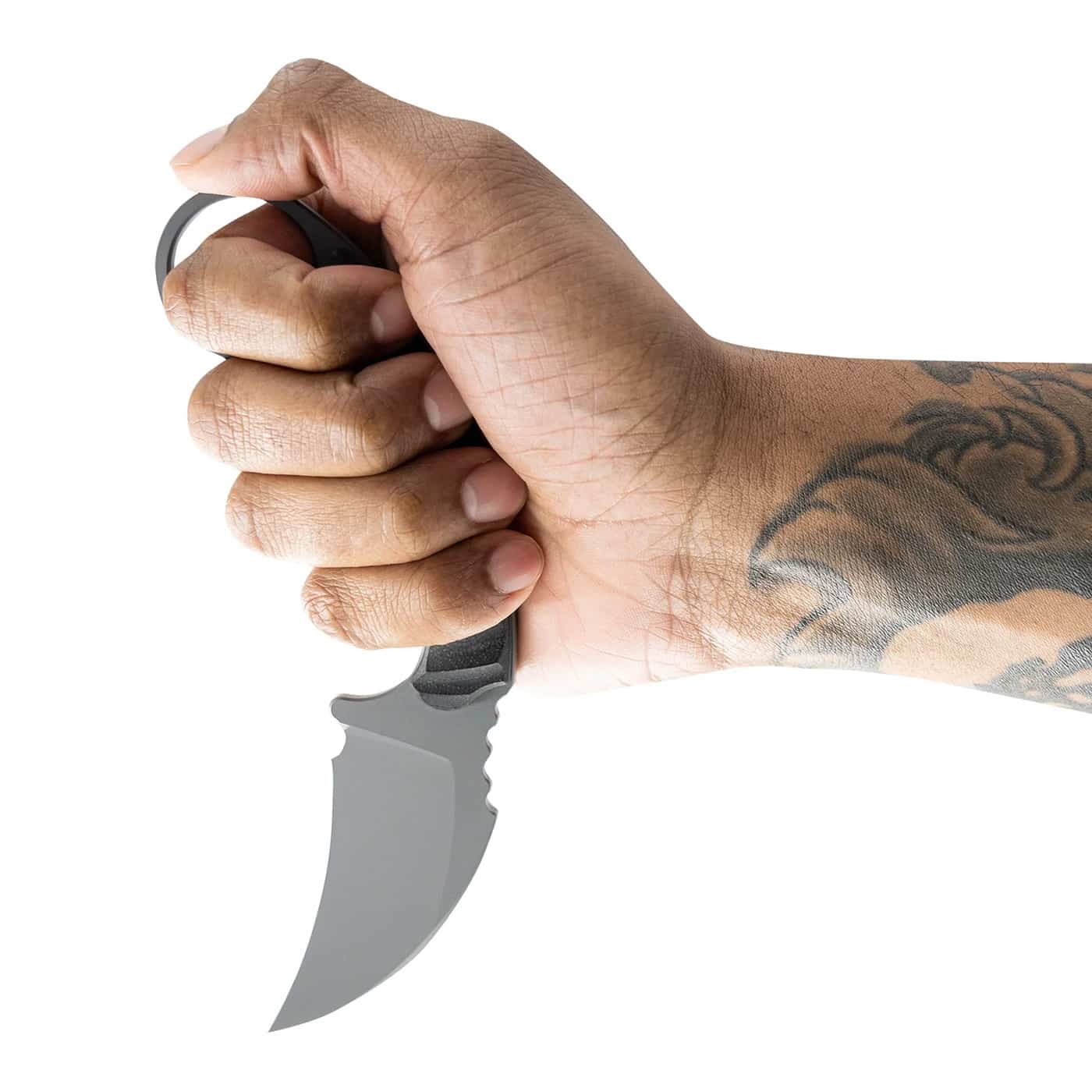
From a practical standpoint, karambits are best reserved for those with martial arts training or a clear understanding of their mechanics. While they excel in specific self-defense applications, they are less suited for everyday utility or broad field use. Their aggressive look may also raise some eyebrows in certain jurisdictions due to their aggressive appearance and blades are tightly regulated. Despite these drawbacks, the karambit remains a potent fighting tool for practitioners of combative arts or those willing to train with it. It’s a very effective weapon when employed within the parameters of its design.
The Karsumba R
Built for real-world performance, the Karsumba R clocks in at 6.625 inches overall, with a 2.5” full-tang blade and a 4.125” handle. It tips the scales at 5.5 oz, with a stout blade thickness of 0.1875”. The 2.5” blade length makes the Karsumba R legal to carry concealed in many states. Of course, check your local laws.
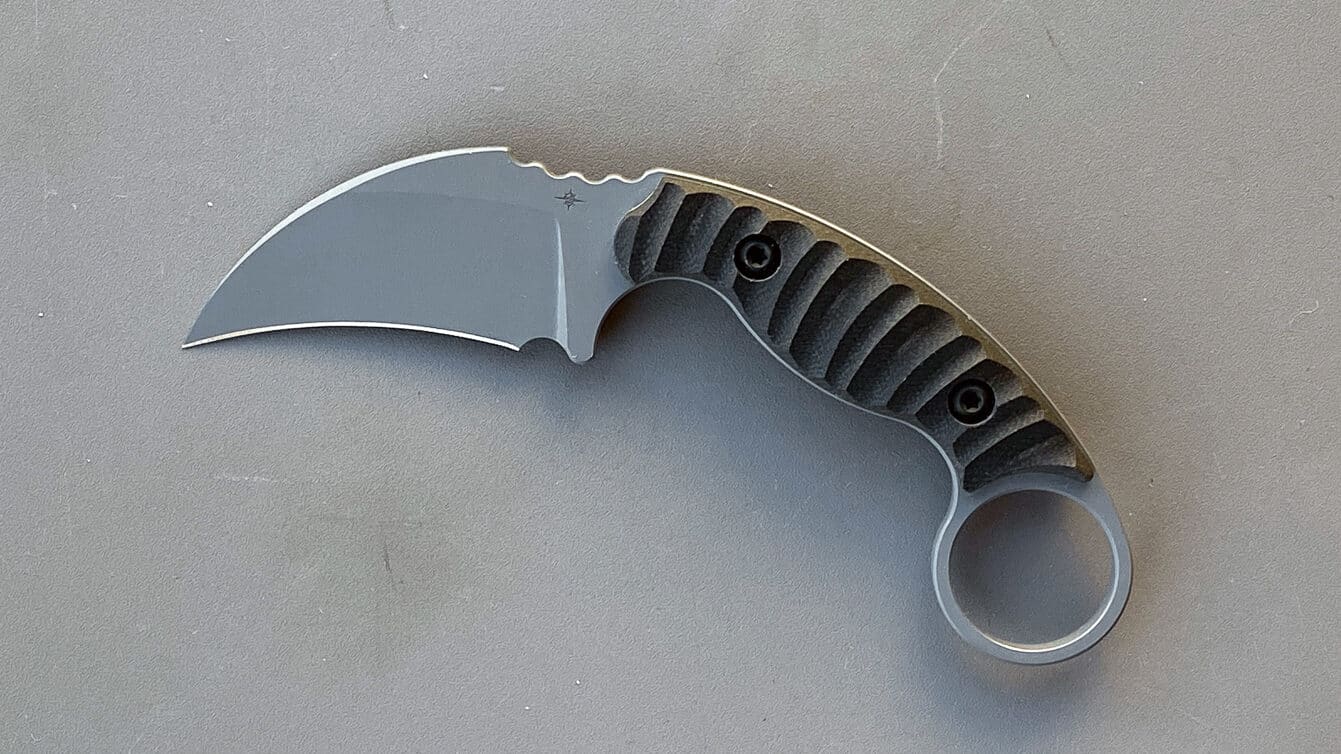
Although the Karsumba R is designed as a specialized fighting tool for personal defense, it has multi-use utility applications. It retains the traditional karambit hawkbill blade profile, with a sharp downward curve. The blade features a full flat grind, optimizing cutting efficiency and reducing drag while maintaining a keen, razor-sharp edge. It terminates in an aggressive point. Jimping along the spine allows for enhanced control. It should be noted, Toor also offers a drop point version of the Karsumba, called the Karsumba S, for those who prefer a more general utility blade profile.
Forged from Crucible’s CPM M4 tool steel, the blade boasts exceptional toughness, wear resistance, and edge retention. With high carbon content and minimal chromium (around 4%), it’s not stainless and demands proper care to avoid corrosion. Toor tempers the steel to 59–61 HRC, balancing toughness, edge retention and ease of sharpening. A wise choice in my book.
The blade wears a protective KG GunKote finish. KG GunKote is a thin, hard, thermally cured coating developed by KG Industries. It provides excellent protection against rust and environmental wear, making it ideal for blades, firearms, and tools exposed to harsh conditions. It’s known for its toughness, though like all coatings, it will eventually show signs of wear.
The G10 handle scales are milled with Toor’s signature tread pattern and offer outstanding grip, even in wet or gloved conditions. G10’s strength, chemical resistance, and non-porous surface make it a staple in hard-use knives. The scales are secured with stainless Torx screws.
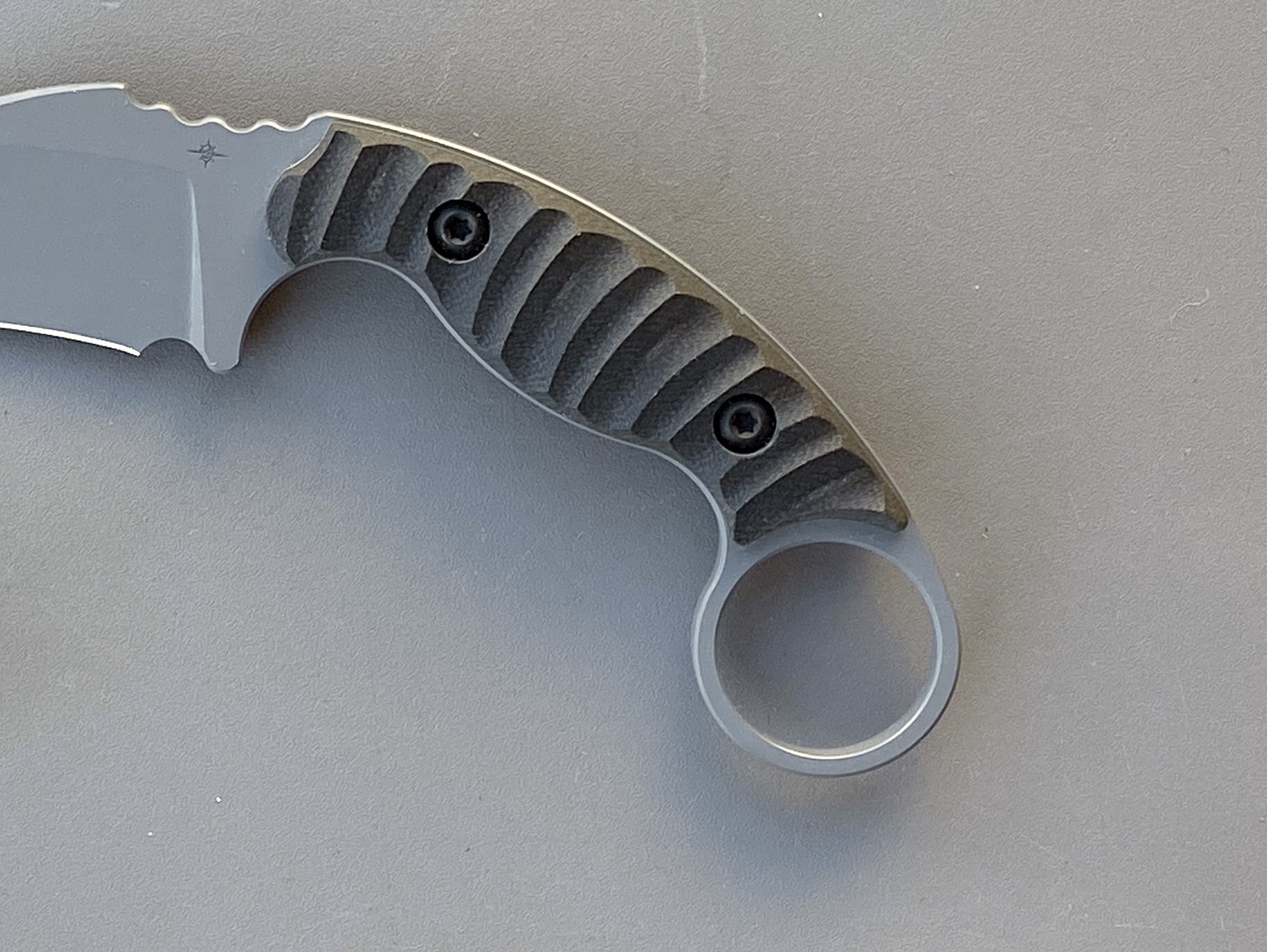
The handle’s curved profile and finger groove promote control whether used in a forward or reverse grip. The retention ring is generously sized to accommodate gloved fingers. Contoured edges on the scales and ring add to comfort during extended use. The balance feels spot-on in hand.
Karsumba R Specifications
| Overall Length | 6.625″ |
| Blade Length | 2.5″ |
| Handle Length | 4.125″ |
| Blade Profile | Hawkbill |
| Steel | CPM M4 |
| Blade Thickness | 0.1875″ |
| Blade Hardness | 59-61 Rockwell |
| Blade Finish | KG Gunkote |
| Handle Material | G10 |
| Weight | 5.5 oz |
| Origin | USA |
| Warranty | Limited Lifetime |
| MSRP | $295.00 |
Sheath and Carry Setup
Each Karsumba R includes Toor’s FlexTech Kydex sheath — precision-molded for a secure fit and smooth deployment. Toor Knives tackles blade rattle in their sheaths with a clever design feature: multiple friction offsets built into their sheaths. These offsets create adjustable contact points that grip the blade more securely, minimizing movement and eliminating that annoying rattle during carry. A retention adjustment screw lets you fine-tune draw tension. The sheath supports a variety of aftermarket clips and mounts, as well as static line carry.
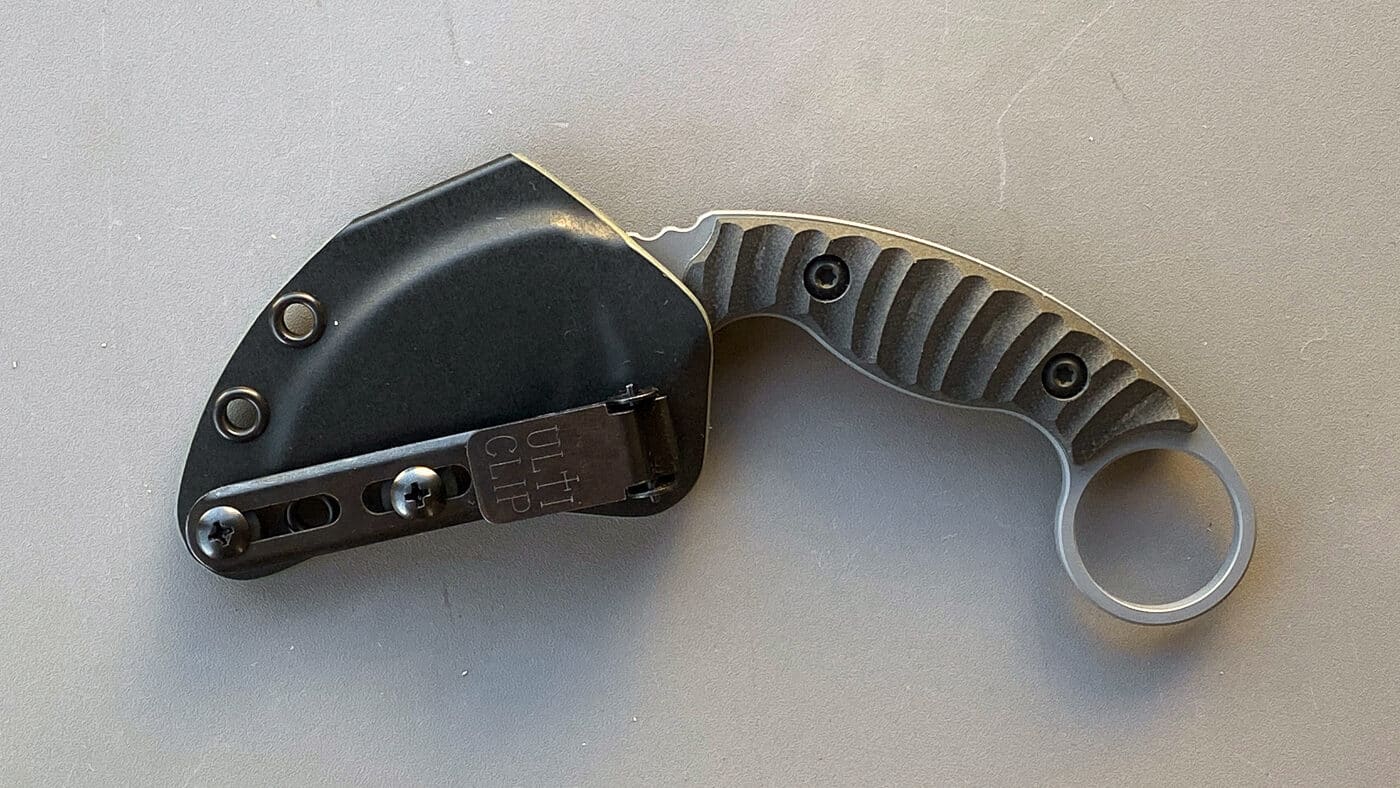
When ordering directly from Toor Knives, you can tailor your sheath with several mounting options depending on your preferred method of EDC or tactical application. I opted to equip mine with the UltiClip Slim 3.3, a minimalist yet rugged upgrade that’s ideal for discreet carry. It’s designed for beltless carry and tuckable. It securely latches to the waistband for a no-slip, low-print profile. It also offers multiple ride-height configurations,
Final Take
The Karsumba R from Toor Knives demonstrates impressive craftsmanship, as has been the case with all Toor knives I have evaluated. The sample I received came razor sharp with clean, precise finishing throughout. It’s well-suited as a compact last-ditch self-defense blade.
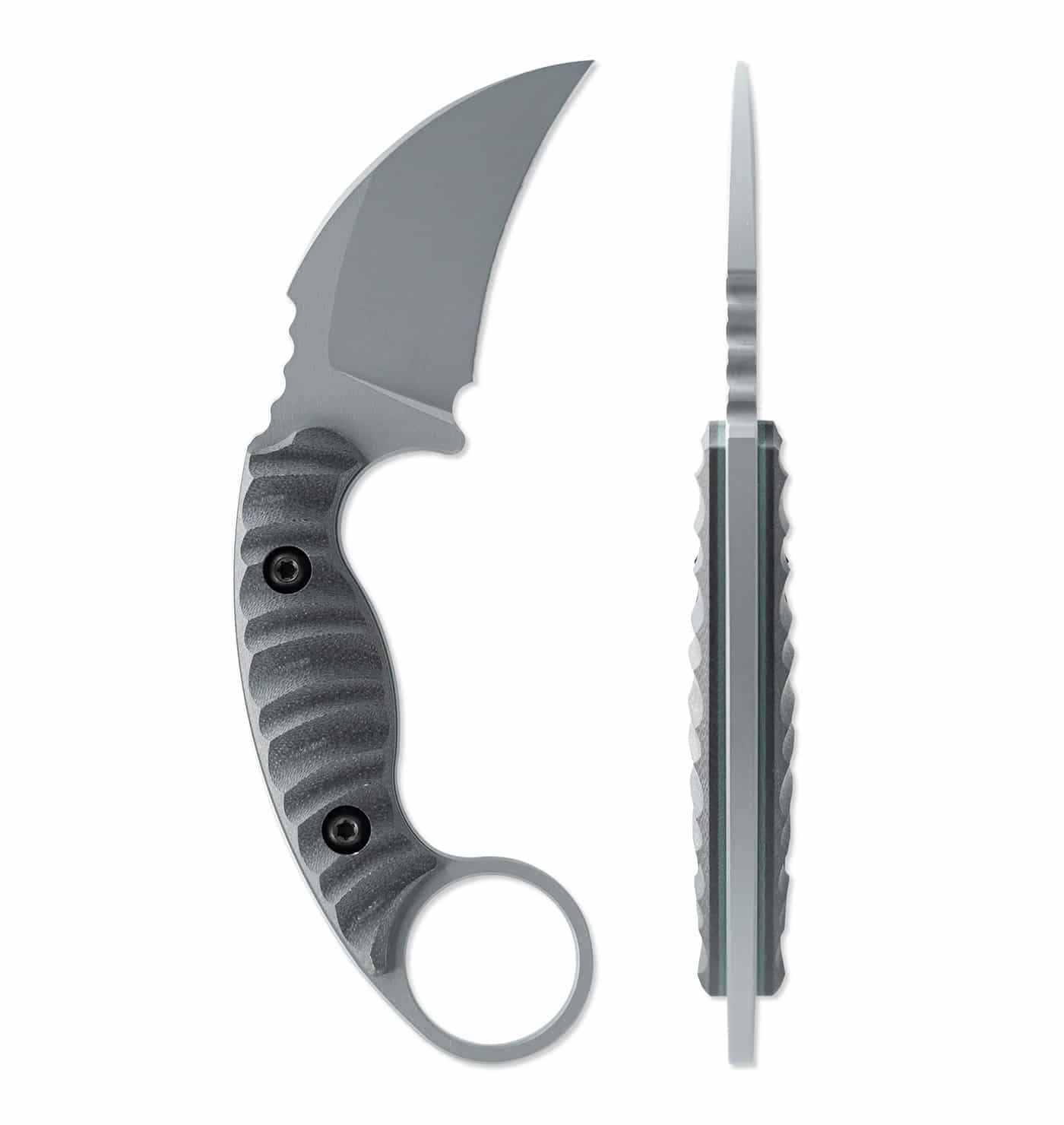
I make it a practice of carrying two knives, one dedicated for self defense and another for everyday cutting tasks. I carry the Karsumba R as dedicated fighting knife carried on my support side, positioned forward of my hip.
Priced at $295 and covered by a limited lifetime warranty, the Karsumba R is an outstanding, purpose-driven tool.
Editor’s Note: Please be sure to check out The Armory Life Forum, where you can comment about our daily articles, as well as just talk guns and gear. Click the “Go To Forum Thread” link below to jump in and discuss this article and much more!
Join the Discussion
Featured in this article
Read the full article here



